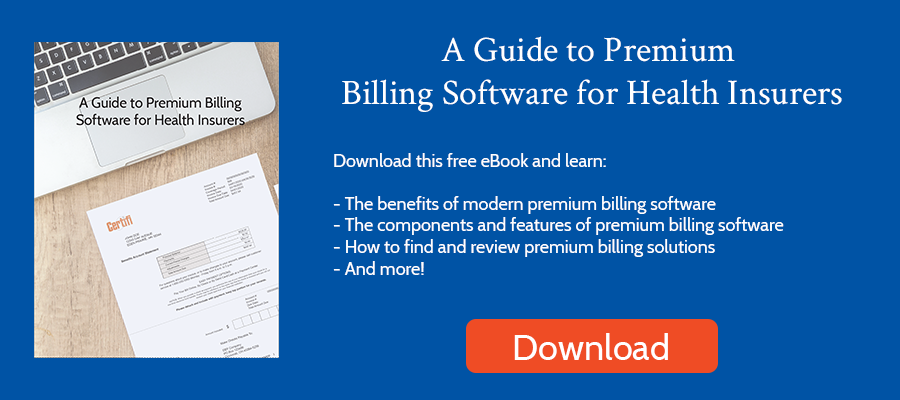Like Blue Shield of California has taken a modular approach to pharmacy benefit management, many insurers are investigating a modular strategy for three core operational technologies: enrollment, claims management, and premium billing.
Blue Shield of California chose point PBM solutions because each vendor offered expertise in certain areas. That expertise theoretically will lead to a better whole while likely driving down costs. A modular approach to operational technology has similar benefits.
For example, Certifi’s billing and payment solution delivers additional features – like automated retroactivity management, an integrated payment portal, and configurable delinquency management. These features are largely absent from all-in-one core administration solutions but offer productivity gains.
There are also secondary benefits for insurers who choose a modular strategy. Vendors that specialize in specific areas tend to have more domain expertise. That expertise leads to greater innovation and more feature-rich solutions.
It’s also easier to replace underperforming technology. Replacing an enrollment platform is easier than ripping out an all-in-one solution. The resulting agility and shortened distractions for technology and operations teams improve productivity.
Though many benefits exist, insurers have concerns about point solutions, namely how to integrate several solutions into a cohesive whole. Here are four tips when integrating a billing solution into your technology stack:
Configuration Data Integration
Your billing rules drive the billing system. That may include grace periods, tolerance thresholds, billing frequency, invoice generation dates, pro-ration rules, fee and commission rules, and retroactivity rules. If those rules reside in an upstream policy administration solution, integrating them with your billing system improves billing accuracy by eliminating redundant data entry.
Typically, those billing rules change infrequently. As a result, a periodic file-based premium billing software integration works best. If that data isn’t available elsewhere, Certifi’s billing system offers an application interface to configure billing rules.
Enrollment Data
Enrollment data – like demographic and coverage data – drive billing. But you also may need to send payee data, like agents and brokers, to your billing application.
We typically recommend integrating that data into your billing application using a file-based integration method, though you could leverage a transactional API. That data is exchanged more frequently – with complete enrollment data files occurring at least monthly and change files more frequently.
General Ledger Integration
While billing rules and enrollment data usually rely on upstream data that feeds your billing system so it can generate billing transactions, you also want to integrate with downstream general ledger solutions. This premium billing software integration sends your billing transactions to your general ledger.
The most common method of general ledger integration is for the billing platform to provide entries on a predetermined schedule. For example, send billed revenue when invoices are made available to consumers and groups and send collected cash after remitting payments. A general ledger integration can take several forms but is generally a custom electronic interface pushed by the billing platform according to a schedule. We can provide detailed information or summarize by a general ledger account based on your needs.
User Experience
Multiple logins to disparate systems waste time while increasing security vulnerabilities. Most health plans have robust member portals that include insurance plan information, network information, and billing and payment data. You can integrate that member portal with your billing application in one of two ways:
- Single Sign-on – You can use single sign-on (SSO) functionality to seamlessly transition members between your member portal and the billing platform’s payment functionality. In this case, you transfer member credentials to the billing platform behind the scenes, and they’ll enter the payment portal without needing to log in.
- API – A second option is for health plans to grab data from their billing application – using the application’s API – and display that data within their member portal. Instead of an SSO to the billing solution’s payment portal, you can pull data – like amount due, payment due date, etc. – into your member portal to display it.
Certifi also enables SSO for team members to log in to our administrative application. Your billing and member services teams can bypass a login using universal login credentials.
That seamless user experience also saves time and eliminates the maintenance of multiple login credentials.
Though some insurers express concern about integrating several technology platforms, it’s easier now than ever. The benefits of point solutions outweigh any integration difficulties.
Certifi’s health insurance premium billing and payment solutions help healthcare payers improve billing accuracy while reducing administrative costs.



